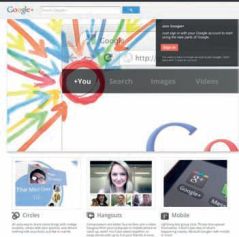Google Plus: Do you need to join another social networking site?
As the role of social networking grows in research and publishing David Stuart takes a look at Google Plus and what it promises

Social networking sites are an increasingly important part of many people’s lives. Such sites are springing into existence for every niche and occasion, from general social networking sites such as Facebook, to those on specific topics (such as Good Reads) or for specific communities of users (for example, Research Gate).
Often these sites are launched and then quickly fade with little interest. However, when a major web organisation such as Google makes a move, a new product inevitably attracts a lot of interest, and the recent launch of Google Plus (Google’s new social network service) is no exception. A large number of individuals and organisations will find themselves asking the question: ‘Do I need to join another social networking site?’
The answer to this question requires making a judgement about both the functionality and the network of people using the site. Unfortunately, such judgements are difficult to make immediately after the launch of a site.
Theoretically, making a judgement about a social network site’s functionality should be relatively simple. For example, someone wanting to make use of a social network site about books may be interested in the extensiveness of the database behind it, while someone using a more general social network site will be interested in the type of content that can be integrated or the ability to build applications on top of a site’s platform.
However, what has been seen from the success of Twitter, and the demise of Google Wave, is that making a judgement on the potential of a technology is extremely difficult. Although many people were initially unimpressed by the minimalist nature of Twitter and its seeming banality, it has grown to become an essential social network site used in a host of different ways. In comparison, Google Wave, which incorporated far more functionality and received plenty of early interest, may have actually suffered from its extensive functionality. This may have created a steep learning curve that many people couldn’t be bothered to overcome.
The network is even more difficult to make a judgement about, especially early on when there is little in the way of user information. A new site sending out a press release saying that it has had so many thousands or millions of users sign-up, gives little idea about the regularity of their using the site. If a person isn’t careful they can waste a lot of time on the wrong numbers. For example, whilst Orkut and LinkedIn may report similar numbers of users, an organisation in the UK or the USA is likely to find the western professional demographic of LinkedIn more appropriate than a more personal site such as Orkut, the majority of whose members are based in Brazil. Joining a social media site is generally free but these sites nonetheless require users to invest time in adding content and building relationships.
In terms of functionality, Google Plus provides a relatively simple environment. As such, it has more in common with Twitter than the defunct Google Wave. It allows users to create simple profiles and share photographs, videos, and links, as well as stream content from other users that they have categorised by putting them in certain circles. It also allows users to create ‘hangouts’ for video chats, and has a number of games so that users can compete socially.
After two and a half months of closed testing, the network was only made available to all in September 2011, and the culture of the site is still emerging. Nonetheless, towards the end of September, unofficial estimates were already suggesting it had 44 million users.
The games suggest a product aimed at the personal market rather than the professional market. However, social network sites are never so easily demarcated.
What’s more, being part of the Google corporation gives the site the advantage of being more fully integrated into people’s online lives. Many users already have a Google account and use Google services. Whenever they do so, Google can nudge them back to Google Plus through the appearance of +1 buttons next to the search results and direct links in a toolbar at the top of Google pages.
It is, however, almost impossible to predict whether a social networking site will be a success or not. While hindsight often allows us to extrapolate reasonable explanations for the success or failure of a service, success has as much to do with an accumulation of many significant and seemingly insignificant factors that, for want of a better term, could be labelled ‘being in the right place at the right time’.
As was seen with Google Wave, attracting numerous column inches and having the backing of the Google behemoth is no guarantee of success, although Google Plus would seem to be a more accessible and better integrated service.
Joining any social network site should be a fluid process, and unless you’re signing up after everyone else has already joined, it should be a tentative process, with the user responding to the changing environment.
For now, users will want to take their first steps into Google Plus, but it is unlikely to be a user’s principle social networking service for a while yet, if ever.
David Stuart is a research associate at the Centre for e-Research, King’s College London, and recent author of Facilitating access to the web of data: a guide for librarians






